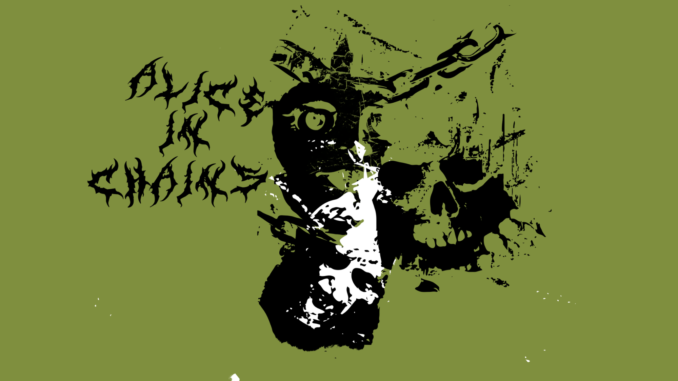
Concept albums have been around for decades and have been utilized to much success. Albums like “Sgt. Pepper’s Lonely Hearts Club Band,” “The Rise and Fall of Ziggy Stardust and the Spiders From Mars,” “American Idiot” and “good kid, m.A.A.d city” have pushed the limits of their genre and redefined what it means to be an album. However, few have reached the levels of darkness and grit of Alice in Chains’ 1992 album “Dirt” which is celebrating its 30th anniversary this year.
Released at the height of the grunge movement, the album focuses on one of the most prominent and dangerous aspects of the dark Seattle scene: heroin. The album focuses not just on heroin addiction but also on addiction as a whole, as every member of the band dealt with some sort of substance abuse. It serves as a dark and ominous foreshadowing to lead singer Layne Staley’s descent into debilitating addiction and fatal overdose during 2002. It provides a tragic look into an excellent band at their darkest moment. The album is a dark and joyless listen, with few tracks that you will want to listen to again. While some of the songs are weak, the impact and lyrical content of “Dirt” are immeasurable and cannot be overstated.
The album opens solidly with “Them Bones,” a song that literally shouts to get your attention, speaking of mortality and death. “Rain When I Die” is a stoner-rock anthem, setting the foundation as well as the bar for the genre during following years. “Down in a Hole” is a slow-tempo rocker that touches on the depressive nature of addiction. The antiwar epic “Rooster” enters at the halfway mark, and it is one of the highest points on the record. The song is one of the only songs on the record that does not deal with substance abuse, instead serving as a biographical account of guitarist Jerry Cantrell’s father’s experience in Vietnam. While it is not explicitly about addiction, the lyrics can also be applied to the subject, serving several purposes. The song is masterful, with Layne Staley’s haunting and pained vocals mixing with Jerry Cantrell’s in-your-face guitar tone to create one of the best stoner rock songs of all time.
The song “Junkhead” touches on the rampant drug abuse in the Seattle music scene, once again expanding on the album’s theme of addiction. The album’s title track showcases the self loathing and suicidal thoughts that often accompany substance abuse, providing a heavy, grungy feel to the music. “Hate to Feel” and “Angry Chair” are both solid additions, with a start-stop feel to the former while the latter once again elaborates on addiction. The album’s closer, “Would?” is the strongest on the album and one of Alice in Chains’ greatest songs. Written about the lead singer of Mother Love Bone and good friend of the band Andrew Wood, who died from a heroin overdose during 1990, the song is a masterclass in songwriting. The rumbling bass, insistent drums, screaming guitars, haunted screeching and growling vocals combine to create a song that not only dominated the band’s discography, but has stood the test of time.
“Dirt” serves as an excellent addition to the stoner-rock subgenre, with riffs that are incredibly thick and sludgy. The album is dark, gritty, angry and nihilistic, never letting up throughout its 57 minute runtime. Granted, some of the songs, such as “Sickman” and “God Smack” are notably bad for the awkward singing by Layne Staley, and many of the songs have a similar sound to them while dealing with similar lyrical content. However, this overall sound contributes to the idea of the album as one entity, discussing one singular theme that threads throughout the music to create a bleak atmosphere. As previously mentioned, few of the songs will make you come crawling back for more. However, is that not the point? Addiction is an ugly beast, one that casts us into the darkest depths of ourselves, forcing us to confront our scariest demons. Yet somehow, we find ourselves shamefully returning to our addictions, like a dog to its own vomit, only to rediscover why we hate them in the first place. The album follows this formula, drawing the listener in with brilliant and catchy tracks like “Rooster” and “Would?” but ultimately leaving the listener depressed and unsatisfied. An album that not only communicates the intended message but leaves the listener feeling like they’ve experienced what the band has, is truly a great concept album.
